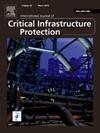热电联产系统的弹性:故障情况下新指标和系统行为的图形分析
IF 5.3
3区 工程技术
Q1 COMPUTER SCIENCE, INFORMATION SYSTEMS
International Journal of Critical Infrastructure Protection
Pub Date : 2025-05-07
DOI:10.1016/j.ijcip.2025.100764
引用次数: 0
摘要
随着威胁能源系统的灾害日益频繁和严重,弹性已成为能源领域的一个重要概念,用于解决高影响、低概率(HILP)事件的后果。尽管它很重要,但在如何评估恢复力方面仍然缺乏共识,能源发电系统,特别是火力发电厂,在现有的调查中受到的关注有限。本研究通过一个创新的图形分析应用于四个热电联产厂,促进了能源发电系统弹性评估的鲁棒方法的发展。该方法引入了两个新参数:可操作性指标和生成指标。可操作性指数的衰减曲线呈现出先下降后出现拐点的趋势,而发电指数在运行前几个小时急剧下降。在早期设计阶段增强弹性的努力应该集中在减轻这些模式上。曲线的导数确定了运行不稳定的关键时期,即初始阶段和最退化时期。改进的系统条件通过最小化导数峰值的振幅来减少这些不稳定性。通过对曲线的积分,对图下的相对面积进行了量化,揭示了所研究的利用燃气轮机的配置对HILP事件的敏感度更高。这些发现强调了根据能源系统的设计和运行特点量身定制的主动弹性策略的重要性。本文章由计算机程序翻译,如有差异,请以英文原文为准。
Resilience in cogeneration systems: Graphical analysis of novel indexes and system behavior under failure scenarios
With the increasing frequency and severity of disasters threatening energy systems, resilience has emerged as a crucial concept in the energy field, addressing the consequences of high-impact, low-probability (HILP) events. Despite its importance, there remains a lack of consensus on how to assess resilience, with energy generation systems, particularly thermal power plants, receiving limited attention in existing investigations. This study advances the development of a robust method for resilience evaluation in energy generation systems through an innovative graphical analysis applied to four cogeneration plants. The proposed method introduces two novel parameters: operability and generation indexes. The decay curves of the operability index reveal an initial downward curvature followed by an inflection point, while the generation index exhibits a sharp decline during the first hours of operation. Efforts to enhance resilience in the early design phase should focus on mitigating these patterns. The derivatives of the curves identified key periods of operational instability, specifically, the initial phase and the most degrading periods. Improved system conditions reduced these instabilities by minimizing the amplitude of the derivative peaks. By integrating the curves, the relative area under the graphs was quantified, revealing that the studied configurations utilizing gas turbines experienced greater sensitivity to HILP events. These findings underscore the importance of proactive resilience strategies tailored to the design and operational characteristics of energy systems.
求助全文
通过发布文献求助,成功后即可免费获取论文全文。
去求助
来源期刊

International Journal of Critical Infrastructure Protection
COMPUTER SCIENCE, INFORMATION SYSTEMS-ENGINEERING, MULTIDISCIPLINARY
CiteScore
8.90
自引率
5.60%
发文量
46
审稿时长
>12 weeks
期刊介绍:
The International Journal of Critical Infrastructure Protection (IJCIP) was launched in 2008, with the primary aim of publishing scholarly papers of the highest quality in all areas of critical infrastructure protection. Of particular interest are articles that weave science, technology, law and policy to craft sophisticated yet practical solutions for securing assets in the various critical infrastructure sectors. These critical infrastructure sectors include: information technology, telecommunications, energy, banking and finance, transportation systems, chemicals, critical manufacturing, agriculture and food, defense industrial base, public health and health care, national monuments and icons, drinking water and water treatment systems, commercial facilities, dams, emergency services, nuclear reactors, materials and waste, postal and shipping, and government facilities. Protecting and ensuring the continuity of operation of critical infrastructure assets are vital to national security, public health and safety, economic vitality, and societal wellbeing.
The scope of the journal includes, but is not limited to:
1. Analysis of security challenges that are unique or common to the various infrastructure sectors.
2. Identification of core security principles and techniques that can be applied to critical infrastructure protection.
3. Elucidation of the dependencies and interdependencies existing between infrastructure sectors and techniques for mitigating the devastating effects of cascading failures.
4. Creation of sophisticated, yet practical, solutions, for critical infrastructure protection that involve mathematical, scientific and engineering techniques, economic and social science methods, and/or legal and public policy constructs.
 求助内容:
求助内容: 应助结果提醒方式:
应助结果提醒方式:


